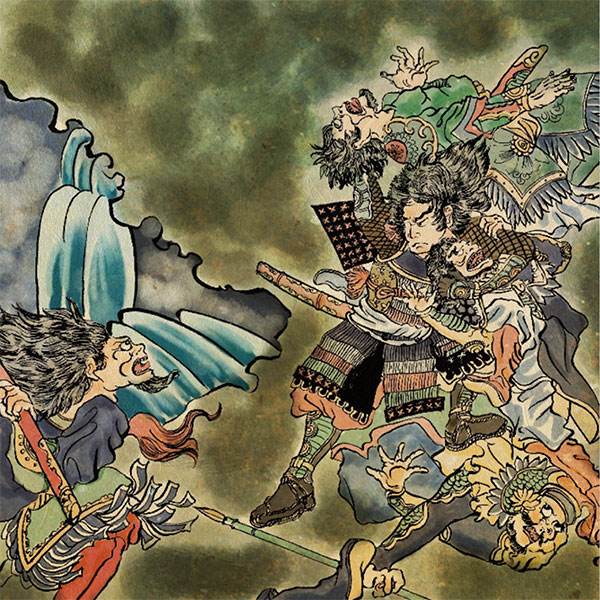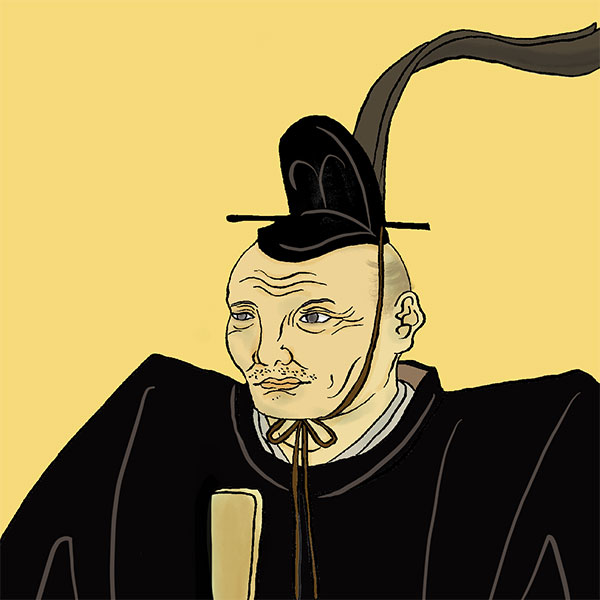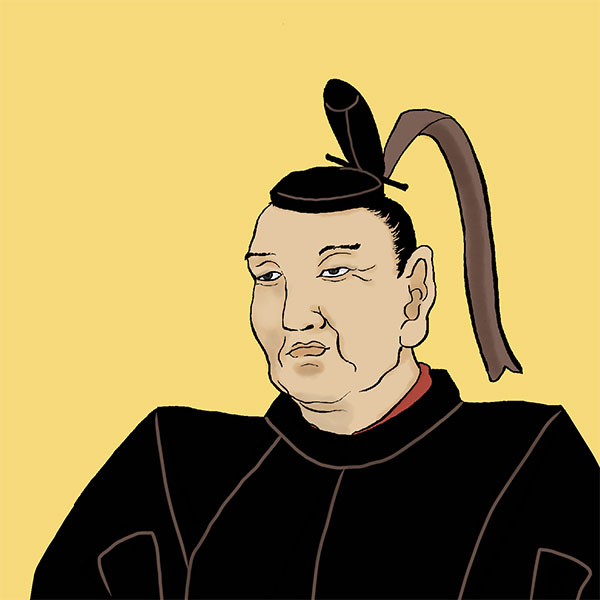- Kumamoto domainRuled by the Kato family and the Hosokawa family.
- The Kumamoto Domain, also known as the Higo Domain, was a domain that ruled over the area excluding Kuma and Amakusa counties and part of Bungo Province. The domain office was Kumamoto Castle, which was ruled by the Kato family and the Hosokawa family, whose ancestors were Kiyomasa Kato, who was known as a ``master castle builder.'' The history of the Kumamoto clan

Kumamoto CastleKumamoto City, Kumamoto Prefecture
- spring
- summer
- autumn
- winter
- TOP
- Kyushu
- Kumamoto Prefecture
- Kumamoto Castle
| Other name | Chiba Castle (Deda clan), Mutsumi Castle, Kumamoto Castle (Kagogi clan, Kikuchi clan, Jo clan, Sasa clan, Kato clan half-country period), Ginkgo Castle |
|---|---|
| castle construction | 1469-1487 |
| address | 1-1 Honmaru, Chuo-ku, Kumamoto City, Kumamoto Prefecture |
| telephone number | 096-223-5011 |
| Opening hours | 9:00-17:00 (last admission 16:30) |
| closing day | No holidays |
| Admission fee | Adults 800 yen / Elementary and junior high school students 300 yen |
- Access to Kumamoto Castle
- 10 minutes walk from Shiyakusho-mae tram station
HISTORYKumamoto Castle was built by Kiyomasa Kato, a master castle builder.
Kumamoto Castle is a flat castle built in the 12th year of the Keicho era (1607) on the Chausuyama hills in present-day Chuo Ward, Kumamoto City, Kumamoto Prefecture. It was built by Kiyomasa Kato, a famous castle builder. Although it suffered major damage in the Kumamoto Earthquake in 2016, restoration work on the castle tower was finally completed in 2021, and it will be restored to its former appearance. Let's unravel the history of Kumamoto Castle.
- Before Kumamoto Castle was built
- It is said that a man named Hidenobu Ideta, a member of the Kikuchi clan who was the protector of Higo Province during the Muromachi period (1469-1487), built a castle called Chiba Castle on the site where Kumamoto Castle is built. It has been reported.
In the 16th century, as the power of the Deda clan declined, a man named Chikanaka Kanokogi, a vassal of the Kikuchi and Otomo clans, established an estate in Chiba Castle during the Onei and Kyoroku years (1521-1531). Kumamoto Castle was built on the site. After that, Yoshitake Kikuchi and others moved to Kumamoto Castle. - Kumamoto castle construction
- When Toyotomi Hideyoshi pacified Kyushu in 1587, Kumamoto Castle was home to a family called the Jo clan who were allies to the Shimazu clan. The Castle family obediently surrendered the castle to Toyotomi Hideyoshi, and in return Sassa Narimasa, who was given the province of Higo, entered the castle. Sassa Shigemasa defied Hideyoshi's orders and forcibly carried out a land survey, which caused a revolt among the people of Higo, and Kumamoto Castle was also subjected to a fierce attack. However, the castle was saved from falling due to the efforts of Jimbo Ujibari, who was the man behind the castle. Shigemasa Sasa took responsibility for the uprising and was forced to commit seppuku, and 195,000 koku of the northern half of Higo was given to Kiyomasa Kato.
Kato Kiyomasa, who entered Higo Province, began building Kumamoto Castle in the Chausuyama hills from 1591 onwards. The castle tower was completed in 1600, and there are records that the name of the place was changed from Kumamoto to Kumamoto in 1606 to celebrate the completion of the castle. Also, in 1615, construction of Honmaru Goten began, with a walkway spanning the main enclosure. Kiyomasa Kato, along with Takatora Todo, is known as a ``master castle builder,'' and there is a theory that this name comes from the splendor of the stone walls he built when building Kumamoto Castle. The stone walls of Kumamoto Castle are constructed so that the slope becomes steeper as you go up, and is also called the ``fan slope'' or ``Mushagaeshi'' because it is difficult for even a ninja to climb.
During the Meiji era, most of the buildings at Kumamoto Castle were demolished, but only this stone wall remained. Although it was damaged by the Kumamoto Earthquake that occurred in 2016, it is currently being restored by the hands of craftsmen. Kumamoto Castle was built with the concept of a cage in mind, and there were many wells within the grounds, and lotus roots were planted in the moat. There is also a theory that the ginkgo trees planted by Kiyomasa Kato, the lord of the castle, were planted with the intention of being used as food during the castle's siege, but this theory has now been denied as they are male ginkgo trees and do not bear fruit. Masu. Another name for Kumamoto Castle is Ginkgo Castle, which comes from this ginkgo tree planted by Kiyomasa Kato. - Kumamoto Castle after construction
- Kato Kiyomasa became the lord of Higo, but his son, Kato Tadahiro, lost control. The person who succeeded him and ruled Higo was Tadatoshi Hosokawa, the lord of Buzen Kokura Castle. It is said that Tadatoshi Hosokawa built a residence called ``Hanabata Yashiki'' south of the long wall of the castle, across the Tsuboi River, and that the feudal lords used it as a place to live after that. After Kato Kiyomasa's death, Kumamoto Castle was left unrepaired due to the financial crisis of the domain and the family turmoil, leaving the castle in an almost undeveloped state except for the area around the main keep. Tadatoshi Hosokawa proposed repairs to Kumamoto Castle to the Edo shogunate, expanding the main keep and improving the second keep. Furthermore, the Hosokawa family proceeded to develop the Sannomaru and Tsubogawa areas as the grounds for the residences of senior vassals and intermediate vassals, and the final construction of the castle was completed during the Tenpo era, less than 30 years into the Meiji era. Kumamoto Castle is a castle that was continuously constructed throughout the Edo period.
- Kumamoto Castle after the Meiji period
- In the Meiji period, a faction called the Jitsugaku Party came to power in Kumamoto, and the government requested that Kumamoto Castle be demolished as a relic of the previous century. However, there was disagreement between the domain governor and the former domain governor, and on the day of the demolition work, the work was stopped and the site was opened to the public. In addition, like castles across the country, military facilities such as a training school and medical facilities have been built on Kumamoto Castle's grounds since the early Meiji period. When the Kampuren Rebellion broke out in 1876, rebel samurai attacked the commander of the castle, Masaaki Taneda, and took over the castle's artillery barracks, but it was suppressed in one day.
During the Seinan War that broke out in 1877, Kumamoto Castle became an important base for the Meiji government and an important strategic target for Saigo's army. During the Seinan Rebellion, many buildings were destroyed, including the large castle tower, small castle tower, main castle tower, main castle east third-floor turret, moon viewing turret, and small hall turret. However, the new government army ended up besieging itself with 4,000 soldiers and withstood the onslaught of the 1,400-strong rebel army led by Takamori Saigo. In particular, it is said that the ``Musha Gaeshi'' established by Kato Kiyomasa was so effective that no one from Saigo's army was able to enter the grounds. At this time, there is a famous theory that Takamori Saigo said, ``I lost not to the Meiji government's army, but to Kiyomasa Kato.''
In 1933, the existing buildings of Kumamoto Castle were designated as former national treasures. This included Uto Yagura and Kanmotsu Yagura.
Kumamoto Castle's buildings survived the Great Kumamoto Air Raid in 1945, and the war ended.
In 1955, it was designated as a special national historic site as the Kumamoto Castle Ruins.
In 1960, on the occasion of the Kumamoto National Athletic Meet and the 350th anniversary of the castle's construction, Kumamoto City solicited donations from the public and worked to restore the exterior at a cost of 180 million yen, rebuilding large and small castle towers, flat turrets, and walls. etc. were rebuilt. The castle tower is made of reinforced concrete, and the interior was used as a branch of the Kumamoto City Museum, where historical materials were displayed.
Selected as one of Japan's top 100 castles in 2006.
The 2016 Kumamoto Earthquake caused damage to many buildings, including stone walls, Nagahori, and large and small castle towers.
Repairs to Nagahori and the castle tower will be completed over five years in 2021. At this time, an elevator was installed inside the castle tower, making it easier to use.
Read about incidents related to Kumamoto Castle
Read biographies related to Kumamoto Castle
History of the Kumamoto Domain, with Kumamoto Castle as the domain office
| Domain office | Kumamoto Castle |
|---|---|
| old area | Kumamoto, Akuta District, Higo Province |
| stone height | 540,000 koku |
| Fudai/Tozama | Foreigner |
| main lord | Kato family, Hosokawa family |
| Estimated population | 648,277 people (Bunsei 11) |
Kumamoto Castle column
Introduction column by castle enthusiasts
























